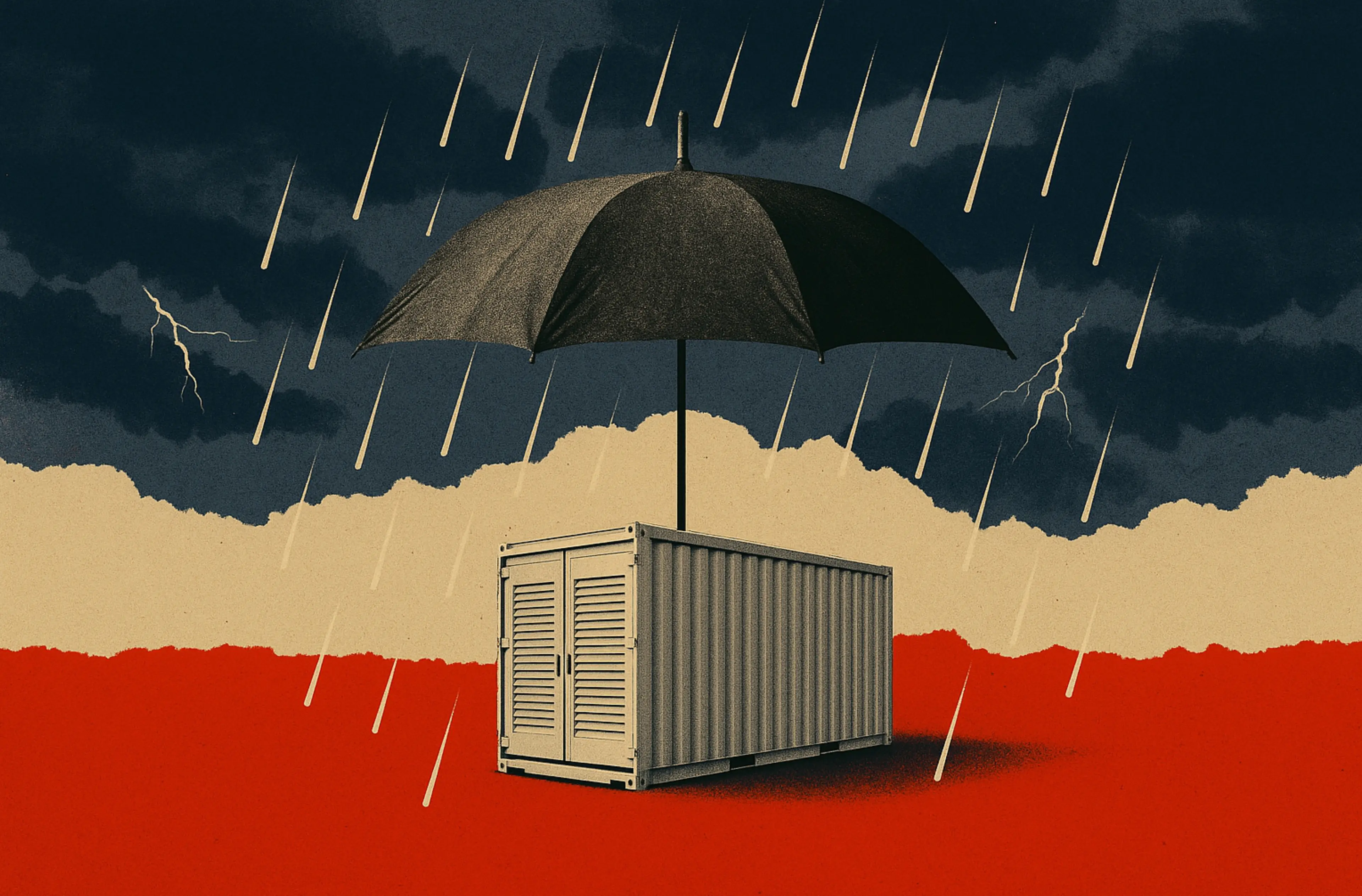Lucrative wholesale opportunities for battery energy storage system (BESS) assets have become more prevalent in recent months. As shown in Figure 1 (below), the average wholesale spreads available on a daily basis in power exchanges have been at a five-year record-high, with even larger spreads available for longer duration BESS assets.

A battery’s ‘duration’ is the ratio between the stored energy capacity (MWh) and rated power (MW) of an asset. Perhaps the most common question we’re currently being asked about battery energy storage system (BESS) assets is: should I build a one-hour (1h) or two-hour (2h) system?
In this article, we take a look at how duration affects BESS revenues, and how market conditions are changing for:
- Ancillary services.
- Wholesale markets.
- Balancing Mechanism (BM).
- Capacity Market (CM).
Ancillary services
Rated power is the determining factor for how much BESS assets can make in ancillary services (see our Benchmarking Revenues piece). This is important because - so far - ancillary services have been the dominant revenue stream for BESS.
The reason BESS assets are so well suited to many of these services is their fast response time, not their ability to provide power for long durations. Since the energy throughput required to provide ancillary services is relatively low, a 2h system has limited additional benefit (i.e. state of charge management) over a 1h system in terms of procuring revenues.
Figure 1 (below) shows the revenues (£/MW) of three assets of different durations that took the exact same trading strategy in May 2021. May 2021 was chosen because each asset stayed in Dynamic Containment (DC) at full capacity and availability for the month.

- Each asset earned the exact same amount (£12,648/MW) in DC.
- In this specific example, having a longer duration provided no additional revenue benefit for Hill Farm (1.2h) or Holes Bay (2h) when compared to Roosecote (0.7h).
- When comparing DC revenues to CapEx spent (of sites of varying duration), longer-duration assets are more likely to be at a financial disadvantage.
Plans are already afoot for a new generation of ancillary services, some or all of which will likely provide ample revenue opportunities for BESS.
So, if ancillary services have so far been the dominant revenue-driver for BESS, why would anybody build a 2h asset over a 1h asset?
Wholesale markets
In frequency response markets, assets are paid for availability. However, in wholesale markets, they are paid for utilization. This is great for 2h assets as they have twice as much energy to deliver compared to their 1h counterparts.
To understand this more clearly, let's look at a real-world example. In Figures 2 and 3 (below), we’ve shown the operational profiles of Breach Farm (a 1h asset) and Contego (a 2h asset) for 14-16 September 2021. There are two important things that happened during this period that need to be taken into account:
- There were three consecutive evening peak prices in excess of £1,500/MWh.
- DC moved to EFA-block procurement on 16 September.


- Both assets followed a similar trading strategy. On the 14th and 15th, before DC moved to EFA block procurement, both sites stayed out of DC to trade spreads in wholesale markets. On the 16th, both exited DC for EFA block 5 to take advantage of the high wholesale prices during the evening peak.
- Contego (2h) was able to charge/discharge over multiple auction blocks for each day, enabling it to capture large spreads than Breach Farm (1h).
The ability to trade over multiple auction blocks in wholesale markets means that 2h assets are able to capture larger revenues than 1h assets. This is highlighted in Figure 4 (below), which shows an estimation of the wholesale revenues earned, for both the assets highlighted, across these three days.

The inconsistency of wholesale opportunities
The fact that 2h systems can earn more in merchant markets may sound appealing, but price spike events like those highlighted above haven’t historically happened very often. That said, as we saw at the beginning of this piece, there are indicators that they are becoming more frequent - Figure 1 (below) shows the average available daily wholesale spreads from January 2016 - October 2021 (inclusive).

Making long-term, real-market comparisons between assets of different duration in merchant markets is difficult. This is because factors such as availability and operator strategy are rarely consistent between any two given assets. However, we can model the revenues of a strictly wholesale strategy for assets of different durations by making a couple of assumptions:
- Each asset cycles once per day.
- The spreads available to assets are dependent on their duration and the maximum/minimum reference prices available on a given day.
Figure 5 (below) shows the (modelled) annualised wholesale revenues of a 1h asset vs. a 2h asset, using the assumptions outlined above. Included is a reference line, showing available DC revenues for the same period.

- When comparing by duration, the 2h asset makes 69.9% more in wholesale revenues than the 1h asset.
- However, if a 2h asset had operated entirely in wholesale markets during the period January - October 2021, using the assumptions outlined above, it would still have made 22% less in revenues than if it had solely entered DC at full capacity for that same period.
- So, while 2h assets are able to take greater advantage of high prices in wholesale markets than 1h assets, frequency response remained the most consistent revenue stream available for all batteries across this period.
Balancing Mechanism
Figure 6 (below) shows (modelled) annualised BM revenues for BESS assets of different durations, using the following assumptions:
- Each asset cycles once per day.
- The spreads available to assets are dependent on their duration and the maximum/minimum Bid-Offer-Acceptance (BOA) reference prices available on a given day.
We’ve taken the average price of all BOAs across each settlement period to calculate our reference price. (Included is a reference line showing available DC revenues for the same period.)

Theoretically, there is potential to earn larger revenues in the BM. However, these revenues assume that every bid and offer is accepted, and are accepted for the duration of a full settlement period. In reality, BESS assets are typically utilised for a period of fewer than 15 minutes, and will not have a perfect success rate in being dispatched.
What does BESS actually do in the BM?
Figure 7 (below) shows annualised BM revenues of Balancing Mechanism Units (BMUs) from the Modo Leaderboard, in the period January - October 2021.

- BESS revenues in the BM are not as high as in the modelled scenario (Figure 6), due to the reasons outlined in the previous subsection.
- Moreover, more than half of these revenues are actually negative, which is reflective of the fact that BM activity is largely used by BESS assets for state of charge management.
So, longer-duration assets are theoretically capable of procuring larger revenues in the BM than shorter-duration assets. However, due to the lack of consistent BM opportunities, it is difficult to make the commercial case for a BESS asset of any duration based significantly on its suitability in this particular market.
Capacity Market
The CM provides long-term contracts for BESS assets, paying them on a £/MW basis for their availability to provide capacity if a system stress event occurs. However, a de-rating factor is applied to their connection capacity, due to shorter-duration batteries being unable to run throughout longer stress events. This de-rating factor is outlined in Table 2 (below).

Source: Modo Energy.
- 2h assets are able to earn ~2x that of 1h assets in CM revenues (for contracts awarded in the same auction).
- On average, CM revenues make up 13% of income revenues for assets on the Modo Leaderboard.
The CM auctions and results give some visibility around the duration of BESS assets being built. Figure 8 (below) shows CM contracts awarded to newbuild BESS assets by duration, excluding commissioned sites.

Conclusion
The operation of assets is becoming more complex, and hybrid optimisation strategies are becoming more commonplace. Understanding the ways in which duration affects BESS revenue streams is vital to making an informed decision on whether to build a 1h or 2h asset. In this article we looked at four sources of revenues for BESS assets:
- Ancillary services - benefit 1h assets when considering the CapEx spent on longer-duration assets to provide the same services at the same availability and rated power.
- Wholesale markets - benefit 2h assets, allowing them to capture larger spreads due to their capability to deliver twice as much energy (compared to 1h assets).
- Balancing Mechanism - due to the lack of consistent BM opportunities, it is difficult to make the commercial case for a BESS asset of any duration based significantly on its suitability in this particular market.
- Capacity Market - the de-rating factor applied on connection capacity benefits 2h assets. However, CM contracts only make up a small proportion of BESS revenues.
Ultimately when deciding between 1h or 2h assets, owners and investors need to weigh up the chances of merchant revenue opportunities becoming more prominent in the future, versus the chances of NG ESO continuing to create new and potentially lucrative frequency response products. As it stands, frequency response still makes up the largest proportion of BESS fleet revenues but merchant activity is definitely picking up.







